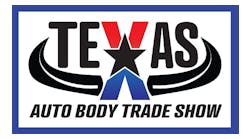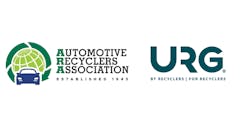Business was tanking when Jim Shreve took over as collision director at Waikem Auto Family Collision Center in 2004.
The company dealt with mismanagement, unproductive employees, lack of involvement with direct repair programs (DRPs) and revenue that barely kept the organization afloat. Shreve’s first order of business was to replace nearly the entire staff. But after finding the right team, the next step was to improve sales to keep them on board.
Shreve focused the shop’s business model on DRP work to grow as fast as possible. He says there is no way the shop could have landed, or sustained, that type of business the way it operated in the past. But with a new workforce and better operational processes, the company was traveling a clearer path.
Within eight years, Shreve landed an incredible 40 DRP accounts for the shop—a mix of both large and small insurance carriers. Today, those relationships produce 98 percent of Waikem Collision Center’s $6 million in annual revenue.
Most shop owners know that getting on those insurer networks isn’t the easiest undertaking. If DRP participation fits your business structure, and you’re eager to obtain more, Shreve offers his trade secrets to help you land the partnerships you’re looking for.
1. Establish credibility through honesty. Shreve says the foundation of insurance relationships is trust. Before anything else, you have to become known as an honest, reliable and trustworthy organization so insurers can confidently depend on you. They need to sense that trust from every employee within your organization.
Shreve constantly displays his ethical values. For example, he says there are times when insurance adjusters mistakenly overwrite estimates. Any time there is a line item included that isn’t necessary, he sends the money back rather than adding it to the bottom line. He also makes an effort to own up to the shop’s mistakes. He picks up the bill for added expenses during the repair process, such as car rental fees, whenever the shop drops the ball and causes extended cycle time.
“That honesty is critical,” Shreve says. “You have to be a big boy if you want to play with the big boys. Acknowledge your mistakes and take care of it.”
Shreve says insurers trust the shop and its repair recommendations. “When I say I need something, they know I really need it. We’re able to make $4,000 supplements over the phone without an adjuster coming back out.”
2. Have an “in” before insurer meetings. You have to meet and have conversations with insurance DRP managers to be added to their networks. Shreve says you can initiate connections within the company before those conversations ever happen.
“I always befriend one of the insurance carriers’ adjusters before meetings with DRP managers,” Shreve says. “That’s a person who is already affiliated with the company who likes, knows and trusts me.”
Shreve makes sure to name-drop, and he use that adjuster’s experiences at his shop as examples during conversations with DRP decision-makers.
3. Develop friendships, not just relationships. It’s critical to get insurance agents on your side, Shreve says. You always want to keep in touch with them to discuss your performance and customer service, but conversations need to focus on more than just components of business. Get to know them and build a personal rapport so they consider you not only a business partner, but also a friend.
“I don’t give them anything or bring them donuts. We just talk about life and family,” Shreve says. “I can tell you each agents’ families’ names, which of their kids are involved in sports, and what their spouses do.”
Shreve recently found one DRP manager who is a huge Ohio State fan. He decided to initiate several conversations around the subject with that manager.
“It made a night-and-day difference when I struck on his favorite topic of conversation. All of a sudden, I spoke his language,” Shreve says. “I was on that carrier’s program within one month.”
Those relationships are key, Shreve says, especially if you can do it with a multi-line carrier with several lines of insurance. “They can talk to the powers that be and get you on programs you’ve had no success with.”
4 Get manufacturer-certified. Shreve says insurers always look for shops that have specialized certifications in certain types of repairs or vehicle models. Many drivers are sticklers about obtaining a certified repair—especially owners of high-end vehicles. Carriers need shops in their back pocket to recommend.
Manufacturer certifications make your facility much more attractive to insurers, Shreve says. It’s another way to establish trust and credibility.
Waikem Collision Center is the only shop in its area with a Honda certification, which Shreve says causes most insurers to send those jobs his way.
5. Keep an eye on repair trends. Shreve suggests looking for patterns in cars you repair. There could be some small insurance carriers that are prominent in your market that you could partner with.
Waikem Collision Center recently had eight repairs in one week that were covered by Ohio Mutual Insurance. Shreve figured the carrier must be hot in his market if his shop alone was getting so many of the company’s claims. And many small companies don’t have large, established shop networks, so getting on their programs can be a bit easier.
“I told them I’m already servicing a lot of their customers with solid metrics,” Shreve says. “It only made sense for them to put me on the program.”
6. Have a presentable and pleasant facility. This is basic, but Shreve says the appeal of your facility can make or break your shop’s image in the mind of insurers. The entire facility must constantly be clean, neat and organized, employees must be dressed professionally, and your shop floor must be furnished with the latest equipment and technology.
Shreve also provides insurers with safety goggles and air protection when they walk through the shop so he can display his commitment to safety. He also offers them use of offices, phone lines and Internet while they’re working in the building.
7. Strengthen your marketing program. Shreve says shop owners need to identify tactics to stay top-of-mind with insurers. He instructs continuing education courses at his shop to do that. Insurers need to earn 24 course credits every two years, and Shreve now teaches a pool of more than 600 agents. He says that gets several new insurance representatives to his facility, and “gets agents chirping in the right people’s ears about the business.” It also provides a large database of insurance professionals to continually market to.
Advice From The Pros
FenderBender tapped two experts on direct repair network development for additional insight on growing your company’s insurance partnerships.
Steve Bruce, president, Quality Claims Solutions
It’s important to offer clear reasons why insurers should partner with you. Prepare a sales pitch to avoid mumbling your way through a meeting.
Insurers always want to know the nuts and bolts regarding your ability to run a smooth operation. Create a document that includes all of your shop’s key performance indicators, training, certifications, awards, shop size, VeriFacts reports and number of technicians. Also include pictures of your facility and heavy-duty equipment, such as your paint booth and frame machine. It’s like a résumé for your business that insurers can refer to after you leave.
Don’t forget to highlight your customer focus. Customer satisfaction affects insurers’ retention rates, so they want to know clients will be taken care of at the shops they recommend. Make sure to discuss any strategies you have in place to boost the customer experience throughout the repair process.
In addition, provide insurers with referrals from both customers and other insurance partners you have. That can carry a lot of weight, especially if you can acquire referrals from a few big-name carriers.
Elizabeth Barton, Northeast regional manager, Top Shop Marketing
It may be very hard to establish DRP relationships if you’re a small shop that doesn’t already have any program involvement. Large insurers are sometimes hesitant to take on shops that have never experienced the direct repair relationship and requirements.
If that’s the case for your company, start by developing partnerships with smaller, three-tier insurance providers such as Esurance. They tend to have fewer strict requirements and more patience for new shops learning the ropes. That will help you get a feel for the DRP process regarding repair, cycle time, software and paperwork requirements.
Remember, there are several insurance carriers across the country, so make sure you go after the ones that are right for your business. That comes down to knowing your shop’s limitations. You may not be able to handle a certain DRP account if your shop is too small. For example, if you only have a 3,500-square-foot shop, you may not have success getting on Allstate or State Farm’s programs because you won’t be able to handle the work volume.
In addition, you need to understand what the insurance company will expect from you. Some carriers might require certain claims processes that are too much for your administrative staff to handle, and some might come with additional business costs such as liability insurance that your business can’t take on. Know those requirements in advance to ensure you’re prepared.
It’s best to prepare your business in advance before actively pursuing program involvement. Once you have a general understanding of insurer expectations, get trained and update your facility and equipment. If you can’t fulfill the requirements, you will not only lose the account, but perhaps also burn the opportunity for the future.




